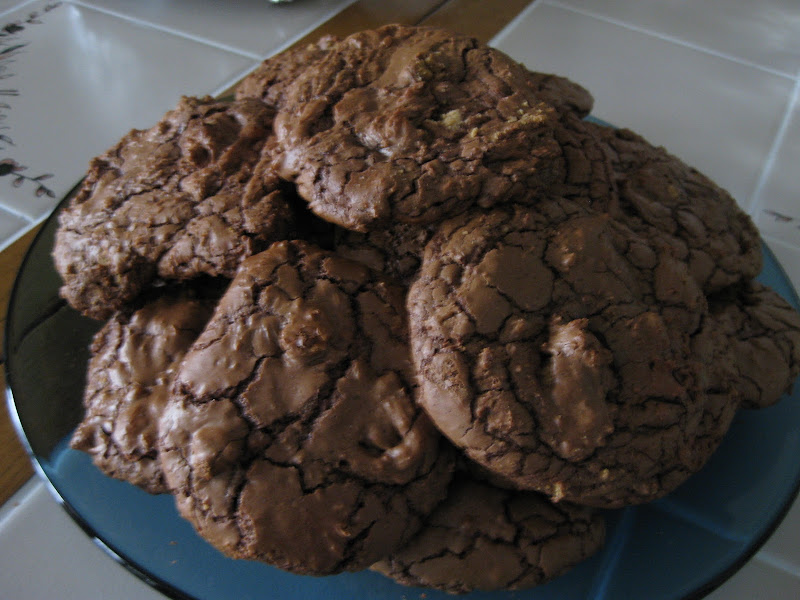
It's always sad when a family loses their culinary heritage because somebody didn't think to write their recipes down. This happens with a lot of families, including mine -- while my dad remembers his Polish mother making a lot of things, he was a boy, so it never really occurred to him that he should be writing these recipes down. About the only recipe we have from his Polish heritage is pierogi, and that recipe actually came from someone my mom met who was Polish and willing to share her recipe.
Every once in a while, I get the urge to try to rediscover the recipes from my heritage. And so, when I learned that Mardi Gras is actually Pączki Day to the Polish, a day for eating what's basically a Polish doughnut, well, I was up for the challenge.
By the time I was done making these, though, they were pretty much dead to me.
First, I had to buy the ingredients. I found a seemingly authentic recipe, and it called for rum, so a trip to the liquor store was in order. (I couldn't find Polish run, but I figured that once it was baked into something, there's probably no difference anyway.) Then, I found an Eastern European grocery store around here, so I could get cherry jam and powidła (plum butter), which are traditional fillings. (Rose hip jelly would also be traditional, but it only came in huge jars, so that was out.)
And then came the actual baking. I mixed the ingredients together, and I set them aside to rise. And I waited.
And I waited.
And I started consulting friends online, who assured me that eggy, sweet doughs sometimes take longer to rise.
And I waited some more.
And many hours later, I realized that this stuff probably wasn't going to rise. I had followed the recipe to the letter, as I always do when I've never made something before. But the recipe had told me to "soften yeast in warm water," which didn't sound right to me. Perhaps I ought to go with my own experience instead of trusting the recipe so much.
So I started over, this time proofing the yeast properly with a bit of sugar. And oh, what a difference it made. That'll teach me to trust a recipe instead of my own instincts.
One caveat for anyone who tries to make these: This dough is weird. Really weird. Like, you'll think you screwed up, 'cause it starts out in the bowl as a really stick, stringy mess. And then, when you roll it out, well, it's still very sticky and very weird-feeling, very light and delicate and sticky and, well, almost like the Blob, oddly enough -- it oozed out of the bowl.
Overall, I'm glad I tried to make these. They did come out edible, though the last rise didn't rise so well, so they were a bit flat. They tasted decent, though. People seemed to like them. Would I make them again? Eh... I don't know. But I'm glad I tried them.
Pączki (pronounced "pownch-kee," by the way)
From Food.com12 egg yolks
1 tsp salt
2 envelopes yeast
1/4 c warm water
1/3 c butter, softened
1/2 c sugar
4 1/2 c flour
1/3 c rum
1 c whipping cream, warmed
Jam/preserves/fruit butter
Oil for frying
1. Beat egg yolks and salt together in a small bowl until thick.
2. In another small bowl, combine the yeast and warm water, then sprinkle a few pinches of the sugar over the top. Let sit until foamy.
3. Cream together the butter and sugar in a large bowl until fluffy.
4. Beat in ingredients, in this order: the yeast mixture; a quarter of the flour; the rum; half of the cream; more flour; the rest of the cream; half of the flour that's left; the eggs. Mix in the rest of the flour (you'll probably need a big spoon for this -- I tried using the mixer, and the dough climbed the beaters).
5. Cover the bowl with plastic wrap and let rise in a warm place until doubled.
6. Punch down, cover and let double again.
7. Punch down, dump onto a floured surface and roll to about an inch thick. Cut out 3-inch rounds.
8. Cover and let rise about 20 minutes.
9. Fry in 350-degree oil until golden on both sides, then drain.
10. Dust with powdered sugar while warm, if using. Or let cool, then mix up glaze (see below) and dunk them in to coat, draining on a wire rack until hardened.
11. Cut a slit in the side of each and pipe in the filling.
Doughnut Glaze1/3 c butter, melted
2 c confectioners' sugar
1 1/2 tsp vanilla
2-4 tbsp hot water
Whisk all ingredients together until combined, adding water if needed to reach the right consistency.







